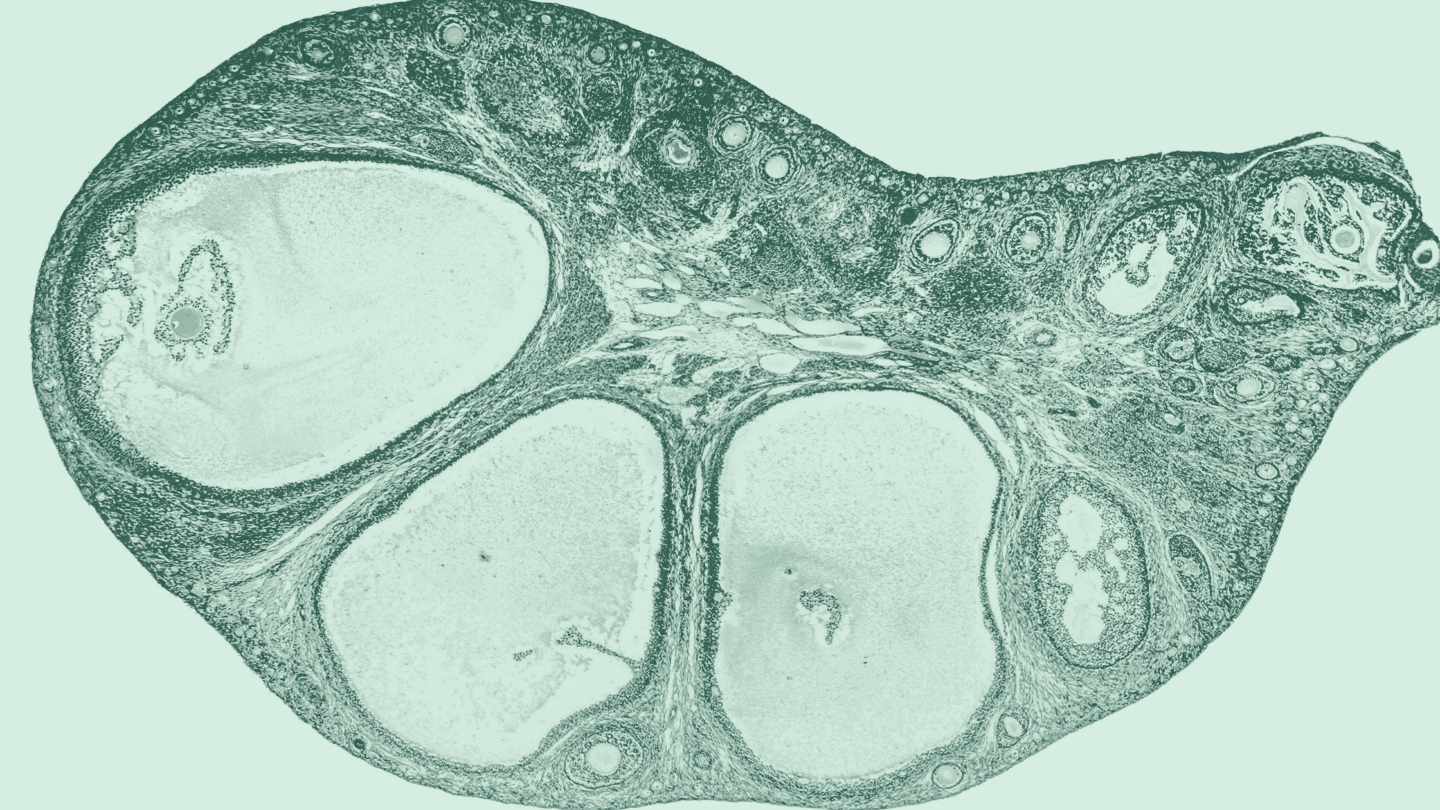There’s a lot of information out there about STDs — and that’s not always a good thing. Sexually transmitted diseases (STDs) and the sexually transmitted infections (STIs) that cause them are, for better or worse (definitely worse), still a taboo subject. And that means they come with lots of part-truths, half-truths, and outright myths.
Don’t beat yourself up if you feel in the dark about STDs (though maybe do give some side-eye to outdated cultural norms). is everywhere, and it’s tough for anyone short of a medical professional to sort fact from fiction. So, let us do some of the sorting for you.
This article has been scientifically reviewed. That means we checked the information against trusted sources like the U.S. Centers for Disease Control and Prevention (the CDC), the U.S. National Institutes of Health (the NIH), and peer-reviewed scientific research papers (published in journals like the New England Journal of Medicine and the Journal of the American Medical Association (JAMA)). We look at what medical professionals and scientists are saying, but also what evidence they have for their claims.
Without further ado, here are the top 11 myths about STDs — debunked.
You can’t get an STD unless you have sex
A lot of people believe this one, and we don’t blame them. How could a sexually transmitted disease be transmitted other than, well, sexually? Unfortunately, you can get an STD without having sex.
A lot of STIs that can be passed through penis-in-vagina sex can also be transmitted through other forms of contact — sexual or otherwise. For instance, the herpes virus can be transmitted through kissing or through oral sex.1 Gonorrhea, which is caused by a bacteria, can infect the genitals, rectum, or throat, and can be transmitted through oral or anal sex.2 Syphilis3 and HPV4 can be passed through just skin-to-skin contact. And for HIV, anal sex is the most likely transmitter, in addition to contact with blood from an infected person (especially sharing needles or other drug injection equipment).5
Is adyn right for you? Take the quiz.
You can get an STD from a toilet seat
Ew, public restrooms. We’ve heard this one a million times, but luckily there’s effectively zero risk of getting an STI from a toilet seat. The viruses and bacteria that cause STIs don’t typically survive outside the body.6 What’s more, even STIs like HIV that can be transmitted by bodily fluids would need to come into contact with an open wound in order to infect you6 — the backs of your legs are safe while squatting.
You’ll know an STD when you see it
One unexpected silver lining of the COVID-19 pandemic is that we’ve all learned a little more about asymptomatic spread: Bodies can host an infection and transmit it to others without ever presenting symptoms. The same goes for STIs, which is why medical professionals like to use “STI” instead of “STD” in the first place: Not everyone who is infected (and contagious) will have symptoms of the full-blown disease.7
That’s why it’s important not to assume that you and your partner are STI-free just because neither of you have any visible symptoms. Getting tested is the only way to know for sure if you have any STIs.
You only need to get tested for STDs if you have a lot of sex
It’s not true that you only need to get tested for STDs if you have “a lot” of sex. This myth, which probably shares a heritage with the sex-shaming mores of previous decades, might sound true. Having more sexual encounters does increase your risk of getting or passing on an STI, especially when you or your partner haven’t been tested, or you’re not using protection.
But in reality, anyone can get an STI. Since it only takes one exposure to become infected, and transmitters might not have symptoms, your partner won’t know if they’re carrying an infection unless they’ve been tested since their last sexual encounter. Plus, some STIs can be transmitted by contact other than sex, so you could technically have an STI even if you’ve never had sex! That’s why it’s important for all sexually active people to get tested for STDs and use protection against them — not just people who have “a lot” of sex.
Like what you’re reading? Get the latest straight to your inbox 💌
You can only catch herpes from someone having an outbreak
Just like you can catch an STI from someone without symptoms, you can catch pathogens from infected people any time, not just when they’re having an outbreak. This myth is most prevalent for herpes, since it’s relatively common and the sores are well known for coming and going. Even doctors didn’t know about herpes’ asymptomatic spread through sexual contact until the 1980’s!8
The fact is, although you’re at risk if you come into direct contact with a sore, you can also become infected after exposure to an infected person’s saliva, genital fluids, or even just skin.1
You can’t get an STD in a pool or hot tub
We’ve heard that you can’t get an STD if you have sex in a pool or hot tub, because the chlorine (or the hot water) kills the viruses or bacteria. But it’s not true: You’re still at the usual risk for STIs after any direct sexual contact in a hot tub. Plus, water, especially chlorinated water, dries out the , increasing irritation and susceptibility to infections.9
That said, much like the toilet seat myth, you’re not going to get an STD just from sitting in a hot tub. That’s where the chlorine and other sanitation measures are helpful, and again, most of the viruses and bacteria that cause STIs can’t live outside of a human body.
If your pool or hot tub isn’t meeting current sanitation standards, there is an elevated risk that you might catch a urinary tract infection (UTI), though, especially if you have sex there. This used to be a much more common problem in public waters than it is today, before public health officials figured out what precautions would keep the bacteria at bay.10 Still, to reduce your odds of infection, be sure to wash up after spending time in any pool, hot tub, or natural water body and put on clean, dry clothes — don’t lounge around in your damp swimsuit.
You won’t get an STD if you use a condom
False: You can still get an STD even if you use a condom. That’s in part because some STIs spread by contact with areas that condoms don’t cover. But using protection, including male and female condoms or dental dams, can greatly reduce your risk of sexually transmitted infections.11 There’s just no way to 100% guarantee it.
To make sure you’re as protected as possible, make sure you’re using condoms and other barrier methods correctly.11 For instance, by using one every time you have sex, checking expiration dates, checking for tears or other defects before using, and never reusing condoms.
You can’t get an STD from kissing
Oh, but you can. Some STDs infect the mouth, and can be transmitted through kissing or any contact with an infected person’s saliva or mouth, like herpes.1 Syphilis, like herpes, can also be oral, causing sores in infected people’s mouths or on their lips.3
STDs are not curable
Many STDs are curable today, but unfortunately that’s not the case for every one. Some viral STIs like HIV, HPV, herpes, and Hepatitis B12 still have no cure. But for many there are drugs, like antiretroviral therapies for HIV, that can keep symptoms and disease progression in check. And although people who are infected with a viral STI may not always have disease symptoms, the infection can linger in the body for life.
Other STDs, especially those caused by a bacteria, are much more treatable. STDs like gonorrhea, syphilis, chlamydia, and trichomoniasis are often curable with a simple course of antibiotics.13
You can’t get the same STD more than once
Sorry: You can definitely get the same STD more than once. That goes especially for STDs that are caused by bacteria. Even if the infection clears on its own or from antibiotics, you can still catch it if you’re exposed again.14-17 For those caused by viruses, the infection can linger in your body, causing symptoms to flare up even after they’ve disappeared for a while.
STDs are the absolute worst
Have you heard that STDs are dirty? That they’re a death sentence? That having one is absolutely mortifying? Hopefully now that we’ve busted some of the other myths, you can see that this one doesn’t have to be true, either. STDs are common,18 and most are easily treatable. So you don’t have to be ashamed – just do your best for the health of yourself and your partner.
-
- CDC. “Genital Herpes – CDC Fact Sheet.” (2022 Jan 03): Last accessed 2022 Feb 07.
- CDC. “Gonorrhea – CDC Fact Sheet.” (2022 Jan 05): Last accessed 2022 Feb 07.
- CDC. “Syphilis — CDC Fact Sheet.” (2017 Jun 08): Last accessed 2022 Feb 07.
- CDC. “Genital HPV Infection – Fact Sheet.” (2022 Jan 03): Last accessed 2022 Feb 07.
- CDC. “How is HIV passed from one person to another?” (2021 Apr 21): Last accessed 2022 Feb 07.
- CDC. “Ways HIV is Not Transmitted.” (2021 Apr 21): Last accessed 2022 Feb 07.
- Tulane University School of Public Health and Tropical Medicine. “STI vs. STD: Key Differences and Resources for College Students.” (2020 Mar 16): Last accessed 2022 Feb 07.
- Rooney, James F., et al. “Acquisition of genital herpes from an asymptomatic sexual partner.” New England Journal of Medicine 314.24 (1986): 1561-1564.
- Planned Parenthood. “Vaginitis.” (N.D.): Last accessed 2022 Feb 07.
- Rinke, Carlotta M. “Hot tub hygiene.” JAMA 250.15 (1983): 2031-2031.
- CDC. “Condom effectiveness.” (2022 Feb 02): Last accessed 2022 Feb 07.
- Mayo Clinic Staff. “Hepatitis B.” (2020 Sep 04): Last accessed 2022 Feb 07.
- Mayo Clinic Staff. “Sexually transmitted diseases (STDs).” (2021 Sep 21): Last accessed 2022 Feb 07.
- CDC. “Gonorrhea: The Facts.” (N.D.)
- CDC. “Syphilis & MSM (Men Who Have Sex With Men) – CDC Fact Sheet.” (2021 Jul 22): Last accessed 2022 Feb 07.
- CDC. “Chlamydia – CDC Fact Sheet.” (2022 Jan 20): Last accessed 2022 Feb 07.
- CDC. “Trichomoniasis – CDC Fact Sheet.” (2021 Jul 22): Last accessed 2022 Feb 07.
- Planned Parenthood. “STDs.” (N.D.): Last accessed 2022 Feb 08.








